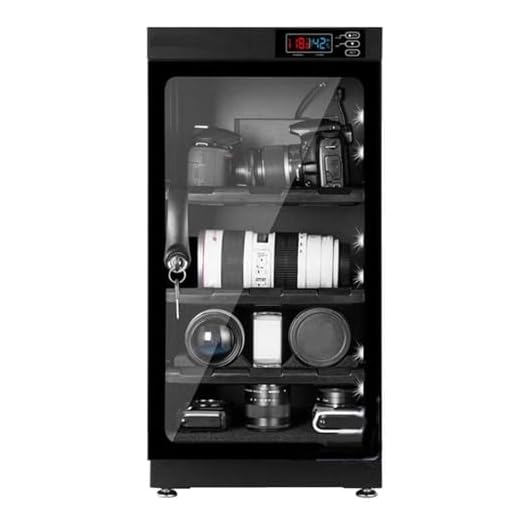




Digital cameras have revolutionized photography, allowing us to capture moments with ease and convenience. But have you ever wondered where all those images are stored?
Unlike traditional film cameras that use rolls of film to capture images, digital cameras store their photos on various types of media.
One common storage option is a memory card, which is a small, removable device that can hold hundreds or even thousands of photos. Memory cards come in different formats, such as SD, MicroSD, and CompactFlash, each offering different storage capacities and speeds.
What Digital Cameras Store
Digital cameras store their images on memory cards. These small, removable storage devices are used to save photos and videos taken with the camera. Memory cards come in various types and sizes, such as SD cards, microSD cards, and CompactFlash cards. The capacity of a memory card determines how many photos or videos can be stored on it. Once the memory card is full, it can be removed from the camera and either transferred to a computer for further storage or replaced with a new empty card for continued use.
Image Storage Formats
When you take a photo with a digital camera, the image is saved in a specific file format. The most common image storage formats used by digital cameras include JPEG, PNG, and RAW.
JPEG (Joint Photographic Experts Group) is the most popular image format because it provides a good balance between image quality and file size. It is widely supported by various devices and software.
PNG (Portable Network Graphics) is another common image format that supports lossless compression, which means it retains all the image data without losing quality. PNG files are often used for graphics and images that require transparency.
RAW format is a type of uncompressed image file that contains all the data captured by the camera sensor. It allows for more flexibility in post-processing, but the file sizes are larger compared to JPEG and PNG.
Some cameras also support other image storage formats like TIFF and BMP, but they are less common in digital photography. Each format has its own advantages and disadvantages, so it’s important to choose the right format based on your needs and preferences.
Memory Cards for Cameras
When it comes to storing images in digital cameras, memory cards play a crucial role. These small, portable storage devices are used to save photos and videos captured by the camera. There are several types of memory cards available in the market, each with its own specifications and storage capacities.
Types of Memory Cards:
- Secure Digital (SD) cards: These are one of the most common types of memory cards used in cameras. They come in various sizes, including SD, miniSD, and microSD.
- CompactFlash (CF) cards: CF cards are larger in size compared to SD cards and are commonly used in professional DSLR cameras.
- XQD cards: These high-speed memory cards are designed for professional cameras that require fast read and write speeds.
Memory cards are essential for photographers as they provide a convenient way to store and transfer images. It’s important to choose the right memory card based on your camera’s compatibility and storage needs to ensure optimal performance.
Internal Memory vs. External Storage
When it comes to storing images, digital cameras use either internal memory or external storage options. Internal memory is built-in storage within the camera itself, allowing you to store a limited number of photos directly on the device. On the other hand, external storage, such as SD cards, allows you to expand the storage capacity by inserting a memory card into the camera.
Internal memory is convenient as you don’t need to worry about carrying extra storage devices, but it has limited capacity. External storage, on the other hand, offers more flexibility and allows you to easily transfer images to other devices by removing the memory card. It’s important to consider your storage needs and preferences when choosing between internal memory and external storage for your digital camera.
Cloud Storage Solutions
Cloud storage is a popular option for storing digital images captured by cameras. It offers a convenient and secure way to store and access photos from anywhere with an internet connection. Here are some popular cloud storage solutions:
1. Google Photos
Google Photos offers free unlimited storage for high-quality photos and videos. It automatically backs up your photos and allows you to access them from any device.
2. Dropbox
Dropbox is a versatile cloud storage service that allows you to store and share photos securely. It offers automatic backup and synchronization across devices.
| Cloud Storage Solution | Storage Capacity | Features |
|---|---|---|
| Google Photos | Free unlimited storage for high-quality images | Automatic backup, access from any device |
| Dropbox | Up to 2TB storage with paid plans | Secure sharing, automatic synchronization |
Backing Up Your Camera Images
It is essential to back up your camera images to prevent the loss of precious memories. Here are some tips to help you safeguard your photos:
Create Regular Backups
Set up a regular backup schedule for your camera images. This can be done manually by transferring them to an external hard drive or cloud storage, or automatically using software that backs up your files at scheduled intervals.
Use Multiple Storage Devices
Store your images on multiple storage devices to reduce the risk of data loss. Consider using a combination of external hard drives, cloud storage services, and memory cards to ensure redundancy.
Remember: It’s not a matter of if you will lose data, but when. Take proactive steps to protect your camera images and preserve your memories for years to come.
Future Trends in Image Storage
As technology continues to advance, the future of image storage is constantly evolving. Here are some of the key trends to watch out for:
- Cloud Storage: With the rise of cloud computing, storing images in the cloud is becoming more popular. This allows users to access their images from any device with an internet connection.
- AI-Powered Image Tagging: Artificial intelligence is being used to automatically tag and categorize images, making it easier to search and organize large photo collections.
- Blockchain Technology: Blockchain technology is being explored for secure and decentralized image storage, ensuring data integrity and protection against tampering.
- High-Capacity Solid-State Drives (SSDs): SSDs are becoming more affordable and offer faster access speeds, making them a popular choice for storing large image files.
- Hybrid Storage Solutions: Combining different storage technologies, such as SSDs and traditional hard drives, to optimize performance and cost-efficiency.
These trends are shaping the way we store and manage images, providing new opportunities for innovation and efficiency in digital photography.
FAQ
What storage devices do digital cameras use to store images?
Digital cameras use various storage devices such as memory cards, including SD cards, CompactFlash cards, and others, to store images.
How do digital cameras save images?
Digital cameras save images by writing the image data onto the storage device, such as a memory card, in a digital format.
Can digital cameras store images directly on the camera itself?
Some digital cameras have internal memory that can be used to store images, but most cameras rely on external storage devices like memory cards for image storage.
What are the advantages of storing images on memory cards in digital cameras?
Storing images on memory cards in digital cameras allows for easy transfer of images to computers or other devices, and memory cards are compact and easily replaceable for extended storage capacity.
Are there different types of memory cards that digital cameras can use to store images?
Yes, digital cameras can use different types of memory cards such as SD cards, CompactFlash cards, and others, each with varying storage capacities and speeds.







